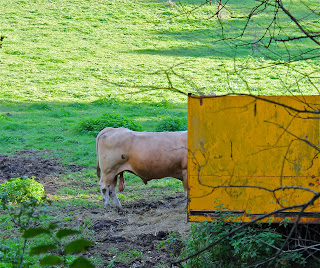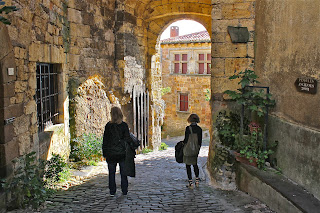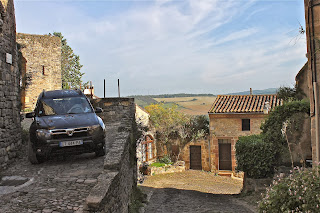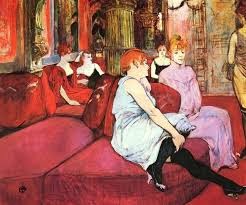 |
| Reflection of the Chateau Tower in the Lake. |
An extremely weathered STOP sign in Caylus. I think it
suits the town. It was on a back road rarely used.
Unusual they aren't in French.
 |
Bleeding hearts grow wild everywhere and there is something about the light in southern France that makes the blues, violets and purples just glow. |
 |
| Love those hose down pay toilettes. I visited the town Montauban, about one hour away and the bus cost 17 Euros round trip. Yikes. |
 |
| A tiny 13th C church perched on a hilltop overlooking the Bonnette River Valley and surrounding farmland. It is a few kilometres from Caylus. |
 | ||
| View from the church across the valley to surrounding hills. Very lush and beautiful vegetation.
|
 |
| The aperitif every afternoon after a long one hour walk/hike. I was becoming a regular. |
 |
| I want one of those above my door! Such lovely details that make the houses so magical. |
 |
| Another car event in the village square. This time it was French classics. Really amazing designs and colours. |
 |
| These folks were really having fun. They walk around town, have some wine and food at the cafe and roll on down the road to the next village. |
 |
| On one of our daily hikes/walks, Sue and I found a little waterfall. |
 |
| Morning cafe creme at the other bar/cafe in town on the main street. One of the important rituals of the day. |
 |
| View of Caylus from a hike we often took. My house was SW of the tower, second house down. The tower is apparently full of bats. |
 |
| Front door lock at Drawinternational. Each door had a unique and heavy duty locking mechanism. The key to this door is huge. |
 |
 |
| One of the many mossy passageways in Caylus. |






































